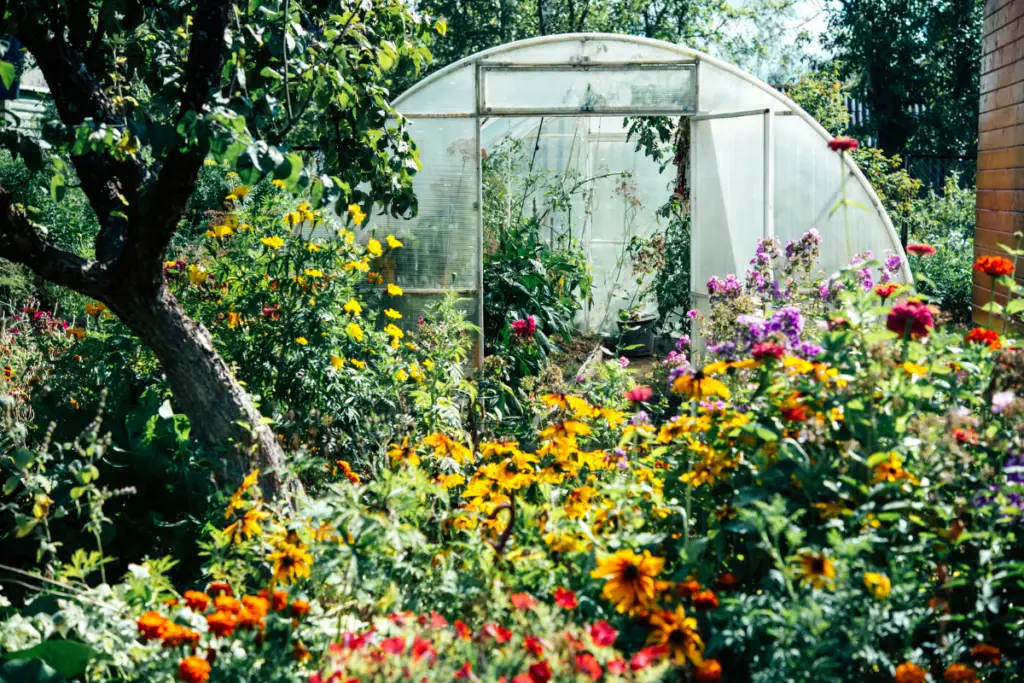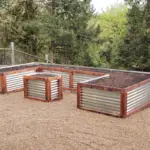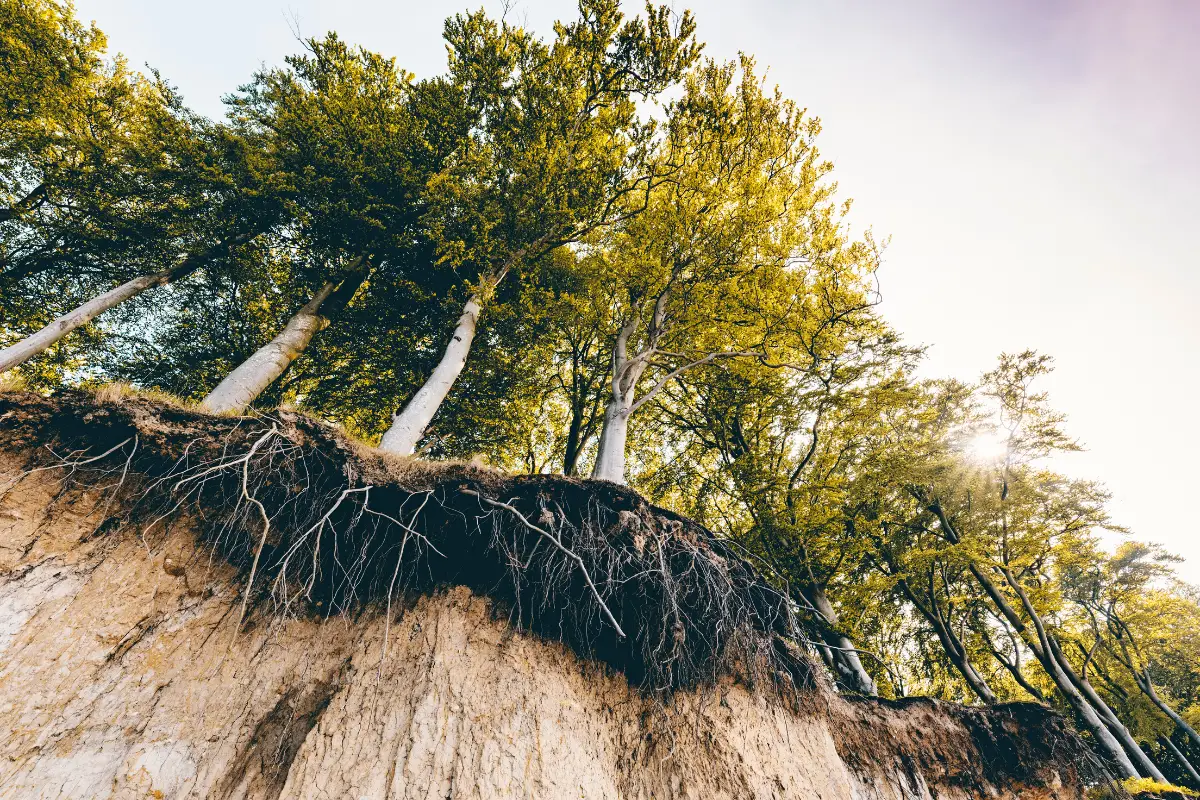Greenhouses are a great way to extend the growing season and cultivate plants that may not thrive in your region’s climate.
While many people use greenhouses to grow common vegetables and herbs, there are also many unusual plants that can thrive in a greenhouse environment.
These unique plants can add interest and variety to your garden while also providing delicious and nutritious produce.
One unusual vegetable that is worth growing in a greenhouse is fiddleheads. These are the unfurled tops of ostrich ferns and are considered a delicacy in some regions.
While they may not be well-known to many people, they are easy to grow and can be a profitable crop for those looking to sell their produce.
Another unusual vegetable to consider growing in a greenhouse is white strawberries, also known as pineberries.
These strawberries have a unique flavor and appearance, with white flesh and red seeds. They are easy to grow in a greenhouse and can be a great addition to your garden.
Whether you are an experienced gardener or just starting out, growing unusual plants in a greenhouse can be a fun and rewarding experience.
With the right care and attention, these unique plants can thrive and provide you with fresh and delicious produce.
So why not try something new and add some variety to your greenhouse garden?

Table of Contents
Exotic Fruits
Growing exotic fruits in a greenhouse is a great way to add variety to your diet and impress your friends with unique flavors.
Here are a few exotic fruits that can be grown in a greenhouse:
Dragon Fruit
Dragon fruit, also known as pitaya, is a tropical fruit that is native to Central and South America.
It has a bright pink or yellow skin with green scales and a white or red flesh with tiny black seeds.
Dragon fruit is low in calories and high in fiber, vitamin C, and antioxidants.
To grow dragon fruit in a greenhouse, you will need a trellis or a support system for the plant to climb on.
Dragon fruit plants prefer well-draining soil and need to be watered regularly. They also need to be fertilized every few weeks during the growing season.
Passion Fruit
Passion fruit is a vine fruit that is native to South America. It has a tough outer shell that is purple or yellow and a soft, juicy inside with black seeds.
Passion fruit is high in fiber, vitamin C, and antioxidants.
To grow passion fruit in a greenhouse, you will need a support system for the vine to climb on.
Passion fruit plants prefer well-draining soil and need to be watered regularly. They also need to be fertilized every few weeks during the growing season.
Kiwi
Kiwi, also known as Chinese gooseberry, is a vine fruit that is native to China.
It has a brown, fuzzy skin and a green or yellow flesh with black seeds. Kiwi is high in vitamin C, vitamin K, and fiber.
To grow kiwi in a greenhouse, you will need a support system for the vine to climb on.
Kiwi plants prefer well-draining soil and need to be watered regularly.
They also need to be fertilized every few weeks during the growing season.
Unusual Vegetables
Growing vegetables in a greenhouse is a great way to expand your gardening horizons. You can grow a wide variety of vegetables that are not typically grown in outdoor gardens.
In this section, we will discuss some unusual vegetables that you can grow in your greenhouse.
Romanesco Broccoli
Romanesco broccoli, also known as Roman cauliflower, is a unique and beautiful vegetable that is a cross between broccoli and cauliflower.
It has a striking appearance, with a bright green color and a fractal pattern of spiraling cones. Romanesco broccoli is also very nutritious, with high levels of vitamin C, fiber, and antioxidants.
To grow Romanesco broccoli in your greenhouse, you will need to provide it with plenty of sunlight, water, and nutrients.
It prefers a slightly acidic soil with a pH between 6.0 and 6.8. You can start the seeds indoors in early spring and transplant them to your greenhouse when the weather warms up.
Kohlrabi
Kohlrabi is a member of the cabbage family and is often described as a cross between a turnip and a cabbage.
It has a bulbous stem that is edible and can be eaten raw or cooked. Kohlrabi is a good source of fiber, vitamin C, and potassium.
To grow kohlrabi in your greenhouse, you will need to provide it with plenty of water and nutrients. It prefers a slightly acidic soil with a pH between 6.0 and 7.5.
You can start the seeds indoors in early spring and transplant them to your greenhouse when the weather warms up.
Celeriac
Celeriac, also known as celery root, is a root vegetable that is related to celery.
It has a knobby, round shape and a brownish-white color. Celeriac is a good source of fiber, vitamin C, and potassium.
To grow celeriac in your greenhouse, you will need to provide it with plenty of water and nutrients. It prefers a slightly acidic soil with a pH between 6.0 and 7.0.
You can start the seeds indoors in early spring and transplant them to your greenhouse when the weather warms up.
Celeriac takes a long time to mature, so be patient and give it plenty of time to grow.
Rare Herbs
When it comes to growing herbs in a greenhouse, there are plenty of options to choose from beyond the typical basil and thyme.
Here are a few rare herbs that are worth considering.
Lemon Verbena
Lemon verbena is a fragrant herb that is prized for its lemony scent and flavor. It is a perennial that can grow up to 6 feet tall in the right conditions.
This herb is often used to make teas, syrups, and desserts. It is also a popular ingredient in perfumes and soaps.
When growing lemon verbena in a greenhouse, it is important to provide it with plenty of sunlight and well-draining soil.
It is also a good idea to prune it regularly to encourage bushier growth.
Lovage
Lovage is a perennial herb that is native to Europe. It has a strong, celery-like flavor that is often used in soups, stews, and salads.
Lovage can grow up to 6 feet tall and has large, dark green leaves.
When growing lovage in a greenhouse, it is important to provide it with plenty of space to grow.
It prefers rich, moist soil and can benefit from regular fertilization. Lovage can also be propagated by division in the spring or fall.
Summer Savory
Summer savory is an annual herb that is native to the Mediterranean region.
It has a spicy, peppery flavor that is often used in meat dishes, stews, and soups. Summer savory can grow up to 18 inches tall and has small, narrow leaves.
When growing summer savory in a greenhouse, it is important to provide it with well-draining soil and plenty of sunlight.
It can be grown from seed or propagated by cuttings. Summer savory also benefits from regular pruning to encourage bushier growth.
Unique Flowers
A greenhouse can be a great place to grow unique and exotic flowers that may not thrive in outdoor gardens.
Here are three unique flowers that can add a touch of exotic beauty to any greenhouse.
Bird of Paradise
The Bird of Paradise flower, also known as Strelitzia, is a stunning tropical plant that is native to South Africa.
This flower is named after its resemblance to the colorful bird of the same name. It features bright orange and blue petals that form a beak-like shape, with long green leaves that resemble feathers.
This flower is relatively easy to grow and can bloom year-round in a greenhouse. Bird of Paradise flowers prefer full sun and well-draining soil.
Bleeding Heart
The Bleeding Heart flower, also known as Dicentra, is a unique and delicate-looking flower that is native to Asia and North America.
This flower features heart-shaped petals that dangle from arching stems, giving it a distinct and romantic appearance.
The petals can be pink, white, or red, and they often have a white inner petal that resembles a drop of blood, giving the flower its name.
Bleeding Heart flowers prefer partial shade and moist, well-draining soil.
Passion Flower
The Passion Flower, also known as Passiflora, is a beautiful and exotic flower that is native to South America.
This flower features intricate petals that form a star-shaped pattern, with long tendrils that give it a unique and striking appearance.
The petals can be white, pink, purple, or blue, and they often have a deep purple center that resembles a crown of thorns. Passion Flower plants prefer full sun and well-draining soil.
Cacti and Succulents
Cacti and succulents are perfect for greenhouse growing as they thrive in hot and dry conditions.
They are low-maintenance, making them ideal for busy gardeners. Here are some of the most popular cacti and succulents to grow in a greenhouse.
Barrel Cactus
Barrel cactus is a popular choice for greenhouse growers due to its unique shape and low-maintenance requirements.
It is a slow-growing plant that can live for up to 100 years. Barrel cactus requires well-draining soil and plenty of sunlight.
It is drought-tolerant and can survive for long periods without water.
Aloe Vera
Aloe vera is a versatile succulent that is easy to grow and has a wide range of medicinal uses. It requires well-draining soil and plenty of sunlight.
Aloe vera is drought-tolerant and can survive for long periods without water. It is also a great air purifier, making it an ideal plant for indoor spaces.
Agave
Agave is a large succulent that is native to Mexico and the southwestern United States. It is a slow-growing plant that requires well-draining soil and plenty of sunlight.
Agave is drought-tolerant and can survive for long periods without water. It is also a great ornamental plant, with a range of unique shapes and sizes to choose from.
Aquatic Plants
Aquatic plants can be a unique addition to any greenhouse. They are easy to maintain and can add a serene atmosphere to your greenhouse.
Here are a few aquatic plants that can thrive in a greenhouse environment.
Water Lettuce
Water lettuce is a floating plant that can grow up to 6 inches in diameter. It has light green leaves that resemble lettuce leaves.
Water lettuce is known for its ability to absorb excess nutrients from the water, making it a great addition to a fish tank or pond.
It also provides shade for fish and other aquatic animals. Water lettuce is a fast-growing plant and can quickly take over a water body if not properly maintained.
Duckweed
Duckweed is a small, floating plant that can grow up to 1/8 inch in diameter.
It is known for its ability to reproduce rapidly, making it an excellent food source for fish and other aquatic animals.
Duckweed is also a natural water purifier, absorbing excess nutrients from the water. It is an easy plant to grow and maintain and can add a unique touch to any greenhouse.
Water Hyacinth
Water hyacinth is a floating plant with beautiful lavender flowers. It can grow up to 3 feet in height and has long, green leaves.
Water hyacinth is known for its ability to absorb excess nutrients from the water, making it a great addition to a fish tank or pond.
It also provides shade for fish and other aquatic animals. Water hyacinth is a fast-growing plant and can quickly take over a water body if not properly maintained.
Conclusion
Growing unusual plants in a greenhouse can be a fun and rewarding experience for any gardener.
With the right combination of temperature, humidity, and light, gardeners can grow exotic plants that are not typically found in their local area.
Here are some key takeaways to keep in mind when selecting unusual crops for your greenhouse:
- Choose plants that thrive in warm, humid environments. Many tropical plants, such as bananas, passionfruit, and pineapples, are well-suited for greenhouse growing.
- Consider the size of your greenhouse when selecting crops. Some plants, such as melons and cucumbers, require a lot of space to grow and may not be suitable for smaller greenhouses.
- Research the specific growing requirements for each plant. Some crops, such as tea and coffee, require very specific growing conditions and may be more challenging to grow than other plants.
- Experiment with different growing techniques to find what works best for your plants. Hydroponics, aquaponics, and other alternative growing methods can be used to create a more efficient and productive greenhouse.
By following these tips, gardeners can create a unique and thriving greenhouse garden filled with unusual and exotic plants.
With a little patience and experimentation, gardeners can enjoy the fruits of their labor and create a truly one-of-a-kind garden.
- How to Dry Basil Leaves: A Professional Guide
- Is an Avocado a Fruit or Vegetable? Simple Answer and Explanation
- Does Pineapple Have Seeds? Exploring the Anatomy of Pineapples
- Blooming Through Winter: Can I Grow Vegetables Indoors in the Winter?
- What Can You Grow in a Greenhouse All Year Round: A Guide to Year-Round Greenhouse Gardening
- Are Blueberries Blue? Debunking the Myth of Their Color
















